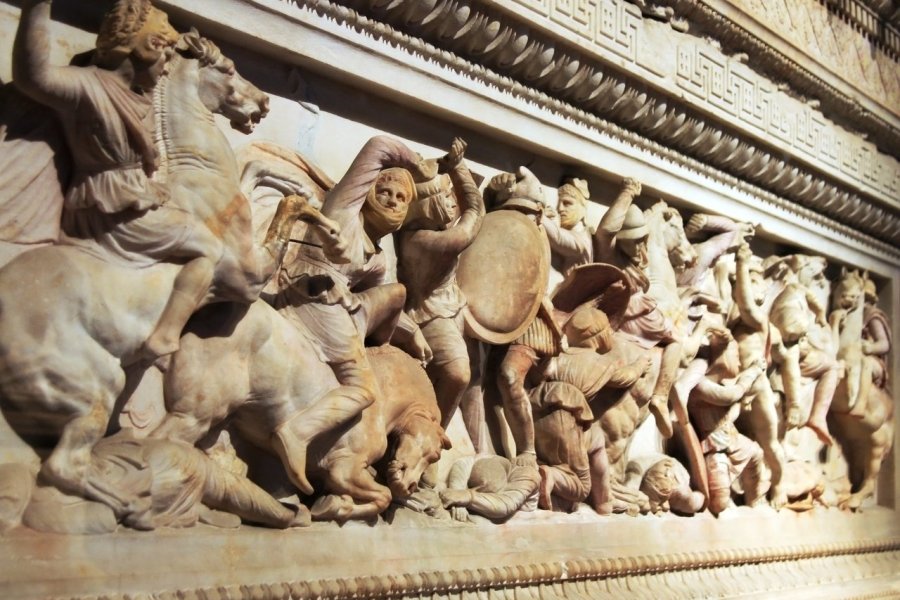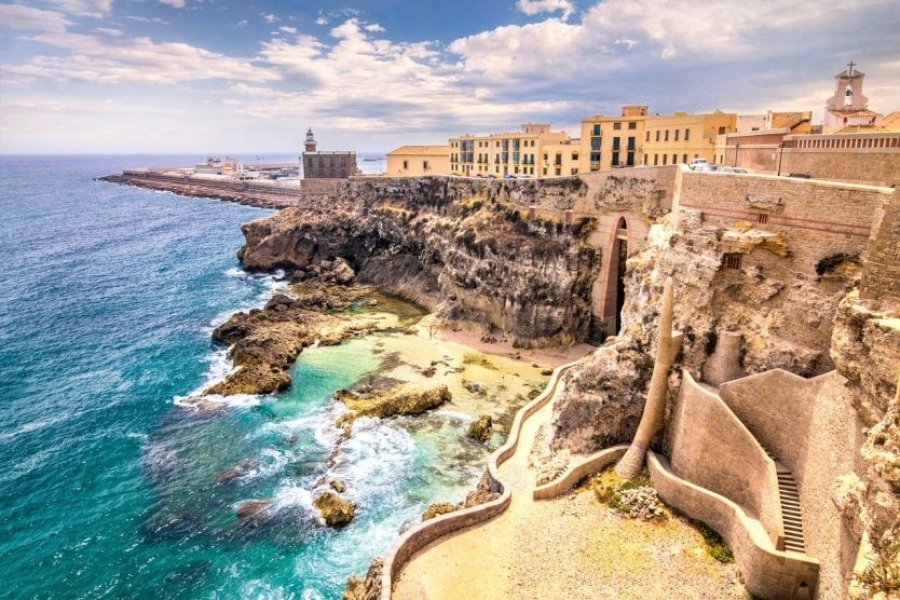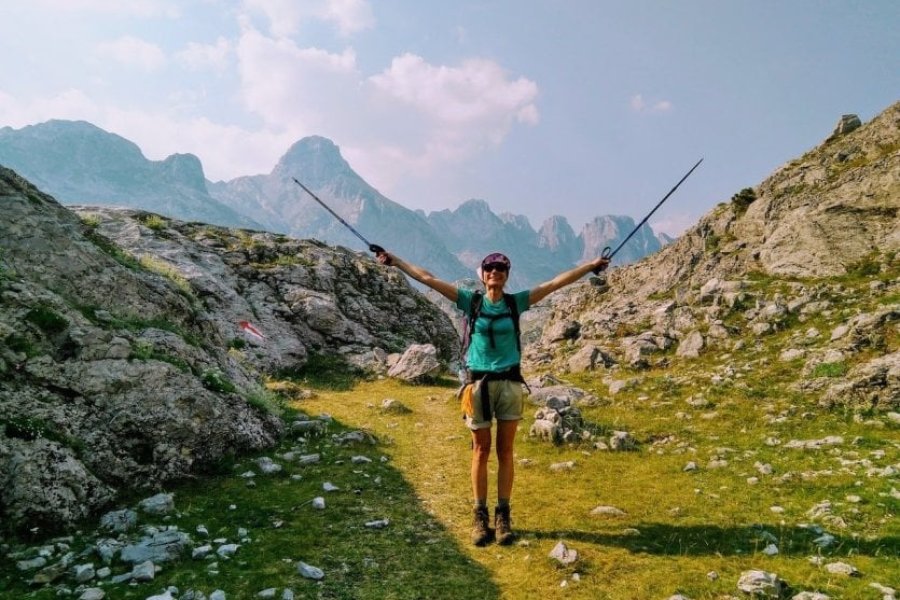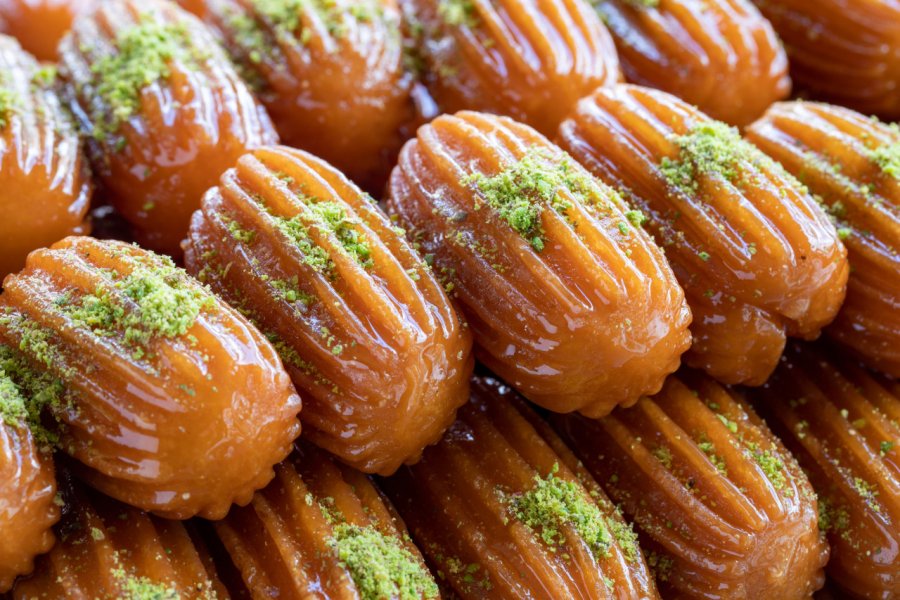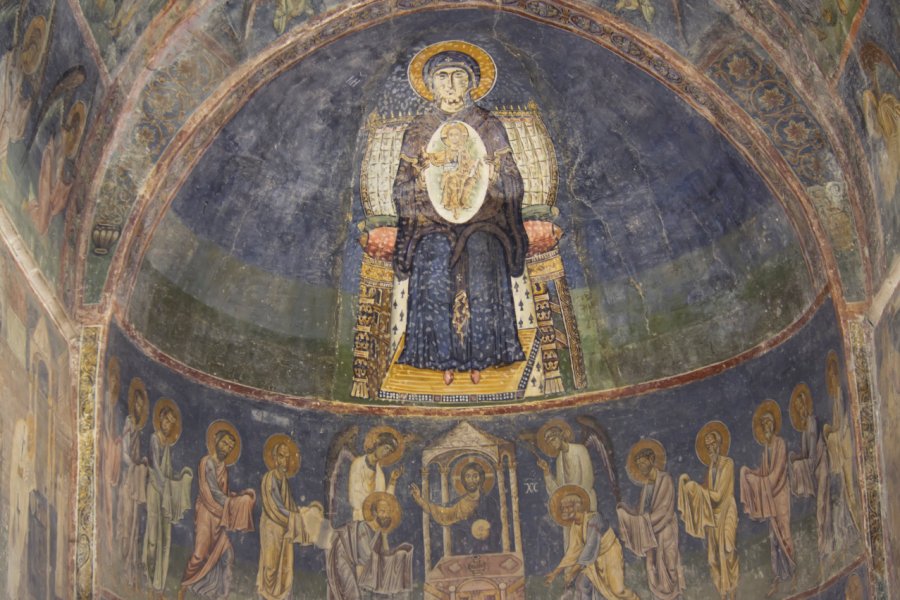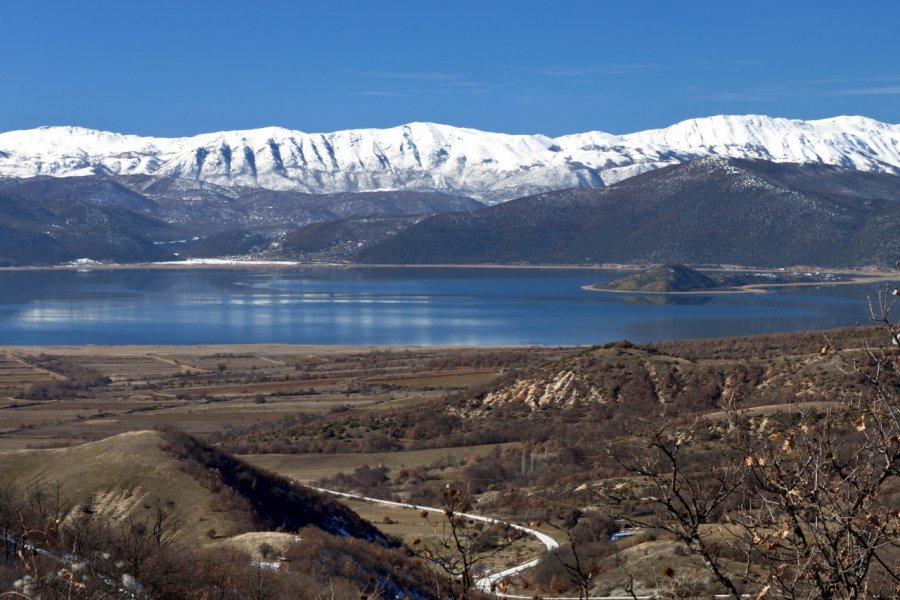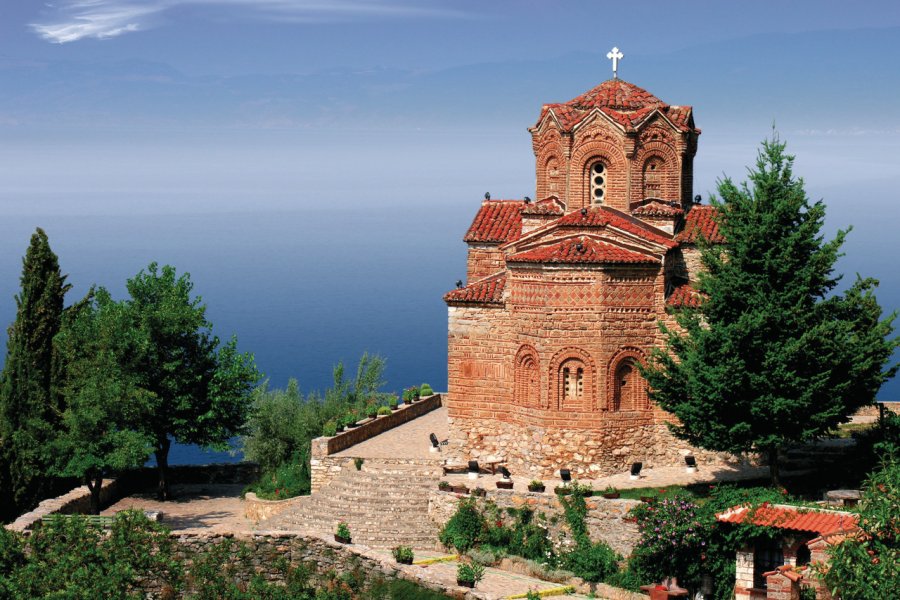Travel guide Northern Macedonia
At the crossroads of East and West, discover an ancestral land of the Balkans: North Macedonia. The imprint of many civilizations can be felt here, from the Greeks to the Romans, via the Ottomans who occupied the country for over five centuries. Today, the country has several identities, mainly Slavic and Orthodox Christian, but with a strong Albanian and Muslim presence. This is symbolized by the peaceful coexistence of churches and mosques in the cities.
Having become independent in 1991 following the dissolution of the former Yugoslavia, the young Republic is still in search of a clear identity. Its very name has been the subject of heated debate with Greece, culminating in the country's name change to North Macedonia in 2019.
Despite these challenges, North Macedonia aspires to become a popular tourist destination. And with good reason: it has no shortage of charm and points of interest. The landscape is stunning, with natural paradises such as Mavrovo National Park, a haven for hikers and skiers, and Lake Ohrid, one of Europe's oldest and deepest lakes. The Šar Mountains add another chapter to this book of natural wonders. Discover the country's most beautiful accommodations .
In terms of culture, the capital Skopje offers a fascinating blend of ancient and modern. The old Skopje bazaar, one of Europe's oldest markets, is a place where cultures meet and mingle. The country's rich and complex history is reflected in its many monasteries, frescoed churches, mosques and archaeological sites.
Mediterranean and Balkan influences come together in tasty, hearty dishes. Discover, for example, tavčegravče, a bean-based specialty to be enjoyed in the best restaurants. Bitola, the country's second-largest city, is a cultural gem, as is Ohrid, a UNESCO World Heritage Site. Northern Macedonia is awakening to international tourism and seems ready to reveal its well-guarded treasures to the world. So, are you ready to go?
What to see, what to do Northern Macedonia?
-
Book an activity
-
Customized travel
- The most beautiful cities Northern Macedonia
When to go Northern Macedonia ?
Wondering when to visit North Macedonia ? Excellent question, because this Balkan destination is full of wonders to discover, from its rich cultural heritage to its breathtaking landscapes! The best time to visit North Macedonia depends mainly on your interests, but don't worry, there's something for every taste and season!
The peak tourist season is during the summer months, from June to August. This is the ideal time for nature lovers to explore the mountains and lakes, especially Lake Ohrid. Beware, however, that accommodation rates are higher during this period.
Do you prefer to avoid the crowds? Then we recommend the spring months, from April to June, and autumn, from September to November. The climate is pleasant, and prices are lower. In April and May, the flowering season transforms the landscape into a veritable palette of colors, a real boon for photographers!
When to visit North Macedonia for events? If you're visiting in July, don't miss the famous Ohrid Summer Festival. Fans of local traditions will be won over by the Vevčani Carnival in January or February.
For winter sports fans, the low season, from December to February, offers skiing and snowboarding opportunities, especially in Mavrovo National Park.
Note, however, that the climate varies from region to region. For example, Skopje tends to be warmer and drier than other parts of the country.
One thing's for sure: this destination has plenty of surprises in store all year round!
Suggested addresses Northern Macedonia
Travel Northern Macedonia
-
Find a hotel
-
Car Rental
-
International e-SIM package
-
Find a local agency
Nous vous proposons ici deux idées de séjour : un circuit classique mais assez complet de quinze jours et un autre, plus inattendu, sur la Première Guerre mondiale. Mais vous trouverez dans ce guide plein d’autres possibilités d’itinéraires. Dans chaque chapitre, nous détaillons de nombreux sentiers de randonnée, des églises médiévales, des stations de ski, d’étonnants monuments de la période socialiste, des sites d’observation de la faune et de la flore, des producteurs de vin… À vous de piocher des idées et d’organiser votre séjour selon vos envies et les saisons, de mixer les thématiques. Pour davantage de liberté de mouvement, on recommande de louer une voiture. Toutefois, le réseau de bus demeure assez convenable. Et grâce à ce guide, vous n’aurez pas besoin de passer par une agence. Sauf à vouloir entreprendre des randonnées exigeantes ou des activités spécifiques (spéléologie, parapente, visites de champs de bataille…).
Find unique Stay Offers with our Partners
How to go Northern Macedonia
How to go alone
Travelling alone in Northern Macedonia offers incomparable freedom to explore this rich Balkan country. Would you like to spend whole days hiking in the mountains of Mavrovo National Park? Or soak up the atmosphere of Skopje's old bazaar? One of the first things you need to do is plan your itinerary carefully. Northern Macedonia is well served by public transport, but for greater flexibility, perhaps consider renting a car. Also make sure you have a local SIM card or a good data plan to facilitate navigation and communications.
Accommodation varies from youth hostels to more luxurious hotels, so whatever your budget, you'll find something to suit you. For a more authentic experience, consider staying in local guesthouses.
Safety-wise, the country is generally safe, but it's always a good idea to take some basic precautions, especially if you're traveling alone. Always keep an eye on your belongings and avoid poorly lit areas at night. And make your trip an unforgettable experience!
How to go on a tour
Participating in a tour package to North Macedonia allows you to enjoy a carefully planned itinerary. Most are designed by local experts to give you a complete overview of the country, its culture, history and breathtaking natural sites.
Organized tours often feature experienced tour guides who provide historical and cultural context and juicy anecdotes.
These tours usually cover entrance fees to national parks, museums and other attractions. What's more, transportation and accommodation are sometimes included, eliminating the stress of having to book hotels or a car in a foreign country. Some organized tours also include meals, activities or even exclusive cultural demonstrations!
How to get around
Getting around in Northern Macedonia is a fairly straightforward experience, with several options to suit your needs and budget. The country has a well-developed public transport network, with buses and trains connecting major cities such as Skopje, Bitola and Ohrid.
If you're looking for more independence, renting a car is an excellent solution. For short distances in town , cabs are inexpensive, but make sure the meter is working to avoid any surprises. Finally, for a more local experience, try car-sharing or local minibuses and immerse yourself further in Macedonian culture!
Featured articles Northern Macedonia
Discover Northern Macedonia
Lots of mountains, a complicated history, varied populations... No doubt about it, this is the Balkans, the "land of blood and honey". Northern Macedonia is still largely unknown to the general public. Most of the tourists here are... the locals themselves, those who have left to live all over the world and return for weddings, vacations or retirement. The few Western travellers who venture here discover grandiose landscapes, wild nature, churches adorned with sumptuous medieval frescoes, mosques lost in the mountains, well-preserved old Ottoman towns, isolated villages with welcoming inhabitants and the astonishing capital, Skopje, completely rebuilt after a major earthquake in 1963. Here are a few pages to help you understand this small country, as complicated as it is endearing.
Pictures and images Northern Macedonia
The 12 keywords Northern Macedonia
1. Alexander the Great

He is the tutelary figure of the country. Everywhere, statues are erected in his honor, appropriating a glorious past. Athens disputes the appropriation of this heritage, rightly pointing out that Alexander's culture was Greek and that the ancient kingdom of Macedonia covered only a tiny part of present-day North Macedonia.
2. Alphabet

Macedonian is written in the Macedonian Cyrillic alphabet. No worries about vowels, except for И, и ("i"). On the other hand, here are a few hints for consonants: Б, б is pronounced "v", Н, н corresponds to "n", Д, д is a "d" and З, з is pronounced "z". As for П, п ("p"), Г, г ("g") and Ф, ф ("f"), they come from Greek.
3. English
Except in certain hotels, restaurants and tourist agencies, English won't be of much use to you. And then, out of respect for the very diverse populations here, learn a few words in the local languages. Almost everyone speaks Macedonian. But minorities speak Albanian, Turkish, Romani, Aromanian, Serbian..
4. Ajvar
This red pepper-based condiment is a specialty of North Macedonia and southern Serbia, served as an accompaniment to almost every meal.Ajvar (Аjвар) is prepared in autumn with roasted, peeled and seeded peppers, garlic, a little chili pepper and sunflower oil. It is baked in the oven and then preserved in jars.
5. Balkans
Northern Macedonia is part of the Balkans (Балкан), a large peninsula in southeastern Europe. It shares many things with its Balkan neighbors (Greece, Bulgaria, Albania, Serbia, Kosovo): Byzantine and Ottoman heritages, cultural and gastronomic habits, hospitality, but also corruption, machismo and more.
6. Hello
It's said in lots of languages. Macedonian: dobro utro (morning, pronounced "dobro outo") or dobar den. Albanian: mirëmëngjes (morning, pronounced "mirémengiesse") or mirëdita. Turkish: günaydın (morning, pronounced "gunaïdeune") or iyi günler. In Romani: šukar dive (morning, pronounced "choucar divé") and šukar rat (afternoon).
7. Café

Espresso, macchiato, latte... it's available everywhere and it's pretty good. But the traditional coffee is the one "à la turque" called here "Macedonian coffee" (Македонско Кафе/Makedonsko Kafe). It's prepared in a gjezve (small copper pot), normally served with lokum (loukoum), and you have to wait for the marc to sink before drinking it.
8. Balkan Lynx
The Lynx lynx balcanicus, or Балкански Рис/Balkanski Ris in Macedonian, is Europe's rarest feline. It once lived between Serbia and Greece. But the last 40 specimens are now found almost exclusively in Mavrovo National Park. Nicknamed the "Phantom of the Forests", it is best seen on 5-denar coins.
9. Thank you
To say "thank you" in Macedonian: blagodaram; in Albanian: faleminderit; in Turkish: teşekkürler (pronounced "téchékurleur"); in Romani: ov stato. To say "please" in Macedonian: ve molam or te molam; in Albanian: ju lutem (pronounced "you lutème") or të lutem; in Turkish: lütfen (pronounced "lutfène"); in Romani: ov stato.
10. Nema problem
Literally, "no problem" in Macedonian (Нема Проблем). This expression is very common in everyday life. It tends to show the willingness of locals to want to work everything out and take everything on the chin. However, according to some chagrined spirits, the nema problem is a harbinger of unsuspected problems.
11. Yes/No
Macedonian: da/ne (pronounced "né"). Albanian: po/jo (pronounced "yo"). Turkish: evet (pronounced "évète")/hayir (pronounced "aillir"). Romani: po/na. A yes or no in English will also be understood by most of your interlocutors. Otherwise, German is spoken by quite a few people who have worked in Germany or Switzerland.
12. Religions

They carry a great deal of weight. Orthodox Christians are mainly Macedonian, Aromanian or Serbian and represent between 46 and 53% of the population. Muslims are largely Albanian, Roma or Turkish, representing 32-35% of the population. There are also Macedonian Muslims and Orthodox Roma and Albanians.
You are from here, if...
You say you live in "Macedonia". Not "North Macedonia". The locals don't really like this official name, the result of a compromise with Greece.
You have only one child. North Macedonia has one of the lowest fertility rates in Europe: 1.3 children/woman.
You go skiing after work. In this mountainous country, there are many small, inexpensive ski resorts.
You park anywhere. Preferably in the right-hand lane of major avenues.
You speak at least two languages. Macedonian (the first official national language) and Serbo-Bosnian-Croatian for Macedonians. Macedonian and Albanian (the second official national language), Turkish, Roma or Aromanian for minorities.
You live on less than €500 a month. The average monthly salary was €421 in 2023.
You heat with wood. Even in the city.
You're not from here anymore. More than a million citizens of North Macedonia live abroad.







